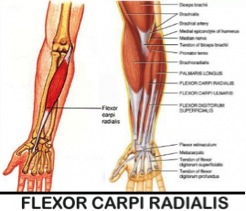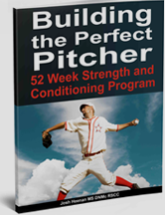From No Offers to DI Baseball Player
I can’t get recruited
I get overlooked
My son doesn’t get fair playing time
They are prejudice because I’m too… short, skinny, slow, etc.
These are phrases we hear all the time.
The “I get over looked… I can’t… my coach…” garbage is just that, garbage. When presented with athletes or families that come saying those phrases we try to change word choice and outlook from day one. Many think they are going to be the next Bryce Harper, but let’s face it, the odds are highly against you.
To be fair, we are lucky to have many amazing athletes and families that are supportive and realistic with where they currently are and where they need to go to reach their goals.
Enter Tom Henderson
After working a showcase with Wayne Mazzoni, he suggested I reached out to Tom as he was a LHP senior in high school with good arm action, good grades, but just needed to get bigger and stronger to have a chance at the next level.
Tom was a whopping 135 lbs at 6’2″ with strength to match his frame— practically none.

Completely out of his comfort zone, Tom came to train 3-4x a week for the next 12 weeks along side pro, college, and signed high school ball players. Being able to do only 1 push-up on day one is pretty humbling when you have athletes tossing around 100lb dumbbells or 14-year olds doing 20 push-ups in a set.
But bust his butt day in and day out he did
After about 2 weeks we sat down and had our nutritional talk. We evaluated where he currently was with his eating and created a plan on how to add some serious size to his frame over the next 12 weeks. We implemented simple weekly check-ins to monitor progress, but attached some deterrents for each missed a weigh-in.
Tom soon felt what it was like to be truly “full”. The first weekly weigh-in he was up 5 lbs. Second week, another 4. Third week, another 4. For those 12 weeks, Tom treated eating like it was a full time job.
Those 12 weeks passed without a missed weigh-in and Tom was now tipping the scales at 170lbs. Along with his new found weight, his strength gains were impressive to say the least. Push-ups had become relatively easy and his deadlift was up over 100 lbs. Most importantly, Tom’s velocity on the mound had jumped.
Prior to his weight gain adventure, I promised Tom if he put in the work, I would vouch for him at his #1 prospective school, Marist College. Upon speaking with the coach I realized they had no more roster spots for the following year. Without any hesitation, Tom said he would end up going there when he was accepted and walk on. Little did he know that 6 weeks later I would get a call from that coach stating they just cut a handful of guys from there program and wanted to extend a roster spot for Tom for the coming year.
Fast forward to today
Tom is now a role player for his DI program and touts a .077 batting average against. Currently sitting at 185lbs with a fastball that nearly tops the 90mph mark. With a frame that can still handle adding another 30-40lbs and project him to add another 5-10 mph on his fastball and 3 more years of eligibility, Tom has a lot to look forward to.
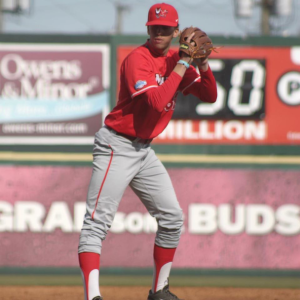
Without Josh’s expertise and connections I would not have had the opportunity to play baseball at Marist College. Josh, along with his terrific staff, have pushed me for two years, and have helped me gain a total of 60 lbs, 35 of those in my first 12 weeks of training. This weight has taken stress of my elbow and shoulder while allowing me to increase my velocity by upwards of 10 MPH, nearing 90 MPH. The key to our training is the focus on muscles and movements that put by body in better positions on the mound, which directly correlates to what you need to continue to succeed and play at the next level.
Are these the type of results you are looking for?
Email me for more information about our remote programming platform, go to https://advancedtherapyperformance.com/90mphformula/
12-Week Weight Gain Coaching For Baseball Players
12-weeks ago a group of readers started my private distance weight gain program. After an initial evaluation, movement screen, and goal setting we proceeded with both a training and nutritional plan for each athlete.
The groups average results were:
-20lbs of bodyweight gained
-100+ lbs added to their front squat
-125+ lbs added to their deadlift
-10+ reps added to their chin-ups
I couldn’t be more proud of these athletes (and families!) for making the short term sacrifice of eating a large amount of food and truly dedicating themselves to hard training.
Although we do have one problem
I promised the person with the most dramatic transformation to receive a full refund for their hard work. After much deliberation with my colleagues, we have not been able to determine a winner, so I am enlisting you, my readers to help choose a winner.
Please Vote Below– Voting Ends Friday February 5th at Midnight!
Brad
Today I weight 221, a total weight gain of 23lbs. I have been consistent with weight training throughout the entire 12 weeks. I was able to do a dead lift of 255 as of the end of my weight training. Before I started this training, the most I was attempting was 135. When I started I was doing about 4 or 5 chin ups, now I can do 12. Since baseball practice started I have gone out and am only throwing about 70% effort and my coach noticed I’m throwing harder than last year. When I was pitching I was able to get 8 batters out in 25 pitches at practice. The most important thing is that a college coach I’m talking to noticed the big change in my size since I went to their training camp in the summer and they asked me to throw a “tryout” bullpen at the college next week. Each week I followed your advice and I never had a hard time reaching the weight goals; I was usually ahead of schedule. My goal was to get to 220 and I reached that with 2 weeks to go to the end of the weight program.
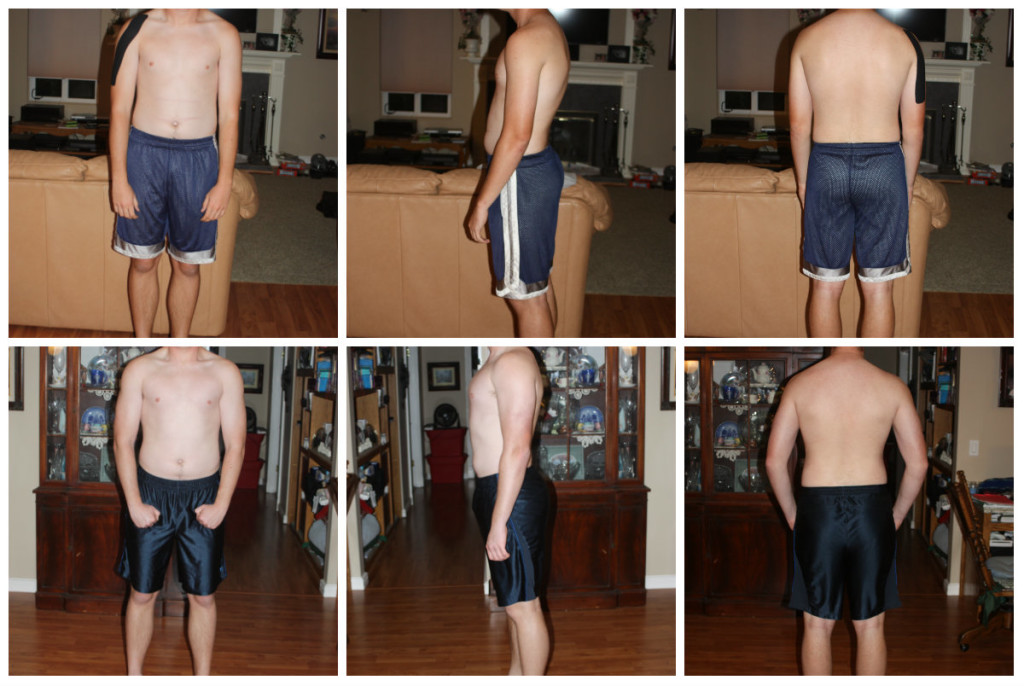
Garrett
First off, thanks for making my money well spent whether or not Garrett wins the contest. I can tell a difference as well as many friends and family.
Though he didn’t meet the full expectations; we offer the following results:
Total weight gain – 139lb to 159lb
Squats – 135lb to 200lb
Chin-ups – 6 to 25
Pushups – 30 to 70
Dumbbell incline press – 30 lb to 60lb
these are all his working weights, not max outs. – Garrett’s Father
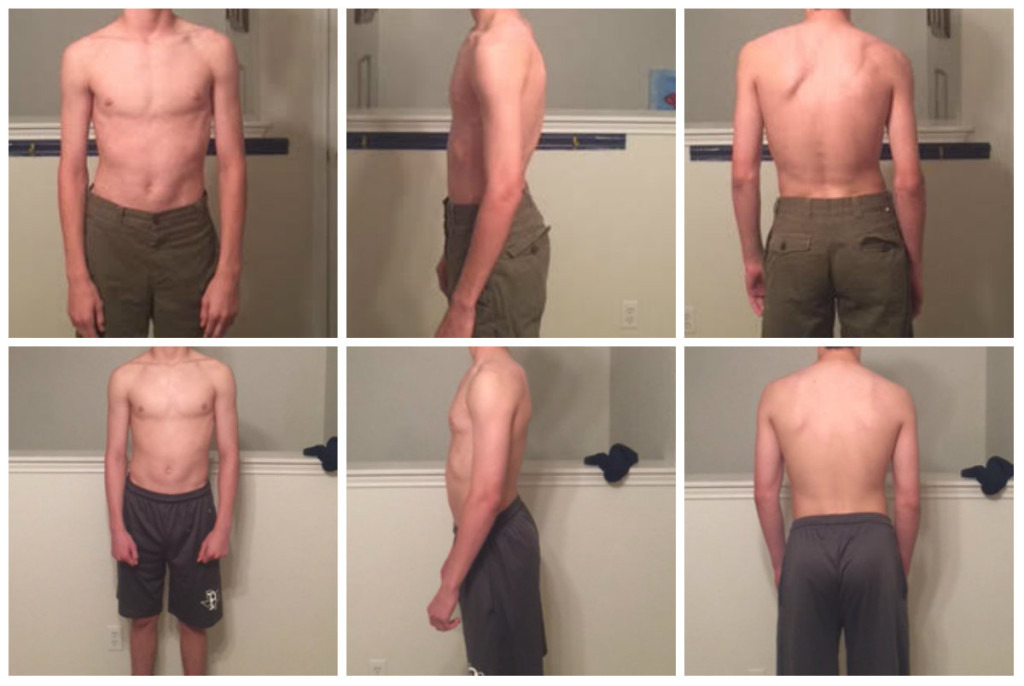
Keanu
My current weight is 171.8 after starting off on an even 148. Being up almost 24 lbs seems huge for 12-weeks worth of work. Strength wise I’ve been noticing major increases in each and every workout, but I haven’t been keeping track of how much exactly except in certain workouts like my rows being up 30 lbs and my deadlift going up 150+ lbs with a max that’s just shy of 200 lbs more than when I first started the program.
This whole experience has been very critical to me in not only playing baseball going forward, but in life because I always wanted to become a bigger person and weighing 150 on a good day wasn’t going to get me anywhere I wanted to go. I wish I could be gained more in this 3 month span, but I’ve learned a lot about how much I need to eat, on top of taking protein and creatine consistently. This definitely won’t be the end of my quest to gain muscle mass and I will without a doubt take what I have learned and incorporate it into my everyday life to become a stronger and better baseball player. Thank you for this opportunity, Josh.

What Does A 100MPH Fastball Look Like In The Gym?
Throwing 100MPH is the goal of many baseball players, pitchers and position players alike. 100 MPH is a tremendous goal, but to be realistic, on average less than 10 MLB pitchers touch 100MPH per season. There is a reason why guys like Aroldis Chapman make 8 million a year.
So how do you create the ability to throw that hard?
Great arm mechanics? YEP
Shoulder-hip separation? YEP
Adequate stride length? YEP
There is no substitute for great arm mechanics and throwing with maximum intent, but many throwers have pretty good arm mechanics and throw with intent. The biggest difference I see with our extremely hard throwers (95+MPH) is they are BIGGER AND STRONGER than those who throw with less velocity.
A great example of this is one of our guys in the Brewers Organization, Alex Farina. Alex touched 95 with regularity in his first season of pro ball.
Returning from the season Alex was a solid 215lbs. Not bad for a 6-foot tall athlete, but we knew he had some growing to do and some strength to gain.
Fast forward 5 months
Alex has busted his butt both in the weight room and kitchen. As of February 1st, he will be a solid 240 lbs. That’s a solid 25lbs to his frame in less than 5 months. What’s just as impressive (AND IMPORTANT!) is that his strength gains have matched every new pound of bodyweight. Sure, he can now deadlift over 600lbs and perform strict chin-ups with 75lbs of external load… for reps… BUT the real impressive feat of strength and power for Alex is his reverse lunge. See below
Many professional athletes wish to posses a 335lb back squat, their dream back squat is what Alex puts on his back and lunges… for reps.
Technique and position are incredibly important to our programming as this prevents injuries and allows us to transfer strength gains to the on-field needs of the athlete.
Think the lunge position matters to throw hard?

WE DO!
So what is your next step today to throw harder?
Check out our on-site and remote programming services at http://www.advancedtherapyperformance.com/
5 Reasons Why You Can’t Gain Weight
Having coached hundreds both in person and as distance clients that routinely put on 20-30lbs in their first 12 weeks of training. I can vouch that many are dedicated to reaching their goals but often have 1-2 major faults that inhibit them from putting on the weight they desire.
Here are my top 5 reasons why people are unsuccessful in gaining weight
5- You are not training with intensity
It’s beyond the scope of this article to dictate if you are on the correct training program or not to gain weight, but regardless of the program, you need to be training with intensity.
Intense training will create the physiological effects that will signal your body to increase muscle mass. Just as important, a solid training program executed with intensity will help increase appetite and allow you to consume more calories over time.
Don’t go through the motions, Train your butt off.
4- You don’t prioritize sleep
Sleep is the time to recover and grow.
Many athletes stay up watching TV and playing video games until 2-4am. Leaving them only 4-6 hours to sleep. When you are able to get deep sleep, your body produces a hormone profile that is optimal for increasing muscle mass and dropping body fat.
For more tips on sleep check out my T-nation article 4 Sleep Strategies for Athletes’
3- You don’t meal prep
This one drives me absolutely nuts.
Without preparing your food in advance you are going to find it near impossible to get enough food in throughout the day. Unless you are a professional athlete, you have to contend with class and/or work on top of everyday life. Having a bunch of meals prepared and snacks always by your side is the easiest way to reach your goals.
I’ve had high school athletes hide PB&J in their backpacks and sneak them in during class or in between class.
I’ve had professional athletes prepare 10-20 meals prior to a long road trip where they know the only options will be McDonald’s for for dinner just about every night.
It doesn’t matter how you get it done, you need to consume enough nutrients for your body to grow. Make it easy on yourself and pack your meals.
2- You have the wrong mindset
Being a skinny kid gaining weight is uncomfortable. It requires preparation, extra time cooking, extra time cleaning, extra time eating, and food will get boring.
GET OVER IT
If it was easy EVERYONE would be their ideal bodyweight, throw 95MPH, and drop 500 foot bombs.
Having a task oriented mindset and understanding that being uncomfortable is a part of the process.
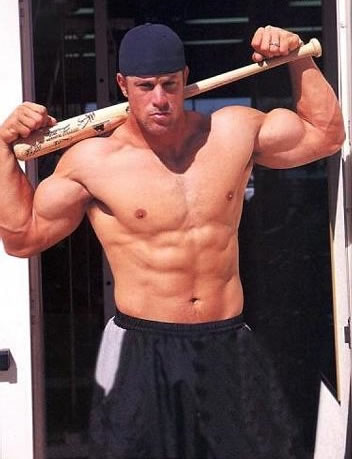
1- You do not have big enough consequences and a support team
I’m a big fan of S.M.A.R.T. goals.
Specific
Measurable
Achievable
Results-focused
Time-bound
Every weight gain athlete I’ve ever had in person or distance coached has implemented S.M.A.R.T. goals with weekly check-ins. These small weekly goals along with surrounding yourself with a team who has the experience and knowledge of how to add some serious weight in a short amount of time makes a world of difference. In our Southport facility, some of the best coaches we have are athletes who have previously gained 30-40 lbs in previous years talking to other athletes.
In regards to consequences, rarely does anyone ever fails to reach their goal when the stakes are high enough. In house, athletes often pick the punishment of eating a can of dog food if they miss a weekly goal. No wonder why no one misses goals.
Move Fast, Throw Hard, Live Well – Early Off-Season
With the fall upon us and our baseball guys entering their off-season, we get an increase in volume of athletes looking to overhaul their fitness and performance training. The follow articles offer good info for the early off-season.
A Peek Into The Sleep Habits Of Teenagers Around The World – Sleep length and quality is not only important for recovery from training and sport, but is immense for long-term health. Sleep is one of the most abused recovery tool we have available for each and every athlete.
High Level Throwing – I had the pleasure of meeting Austin this past winter. Austin does a great job at breaking down high level throwing mechanics. This is the perfect time of year to implement Austin’s tools to fix your mechanics.
Why Your Conditioning is Hurting Your Performance on the Mound – This throwback article gives some insight to how we condition pitcher and prepare our position players to have a powerful first step.
Alex Farina Signs with Milwaukee Brewers
On August 2nd 2013, I made the following post on facebook:
As I mentioned in that post, Alex is the type of client that makes me look great. Simply put, my job is to keep our athletes healthy and progressing while providing guidance wherever needed. For an athlete like Alex who shows up early, stays late, listens, asks well thought out questions, is process oriented, and consistent– he will be successful no matter what he puts his mind to.
Alex spent the summer entering his junior year of college split between the New England Collegiate Baseball League and the Cape Cod Baseball League. Having MLB scouts show interest there was some talk of getting drafted junior year, but to be honest, coming from a program with 3 draft picks in the last 34 years, it was a long shot and not expected.
Eventually, the draft came and went without a call and he reported back to the NECBL for the summer. During that time we spoke openly about how the next 12 months were going to go. The primary goal was to graduate on time with his mechanical engineering degree and play affiliated pro-ball whether or not he was drafted.
Speeding up to present time, Alex earned his degree and got the call he was waiting for from the Brewers and as I write this he is on a plane to their Arizona Rookie Ball affiliate. A well-earned opportunity for someone who dedicated themselves to taking one step at a time, staying focused, and never excepting anything less than being better than yesterday. That is how big goals are accomplished and dreams are realized.
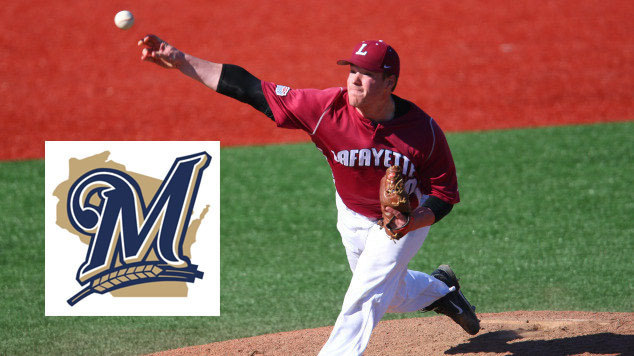
Add Muscle Mass, Get Recruited and Drafted
With the rigorous in-season schedule of games, practice, school, and life adding lean muscle mass can be very challenging. Add in distance running, hot weather, and a lack of training it can feel impossible to maintain bodyweight, let alone add some clean LBS to a wiry frame.
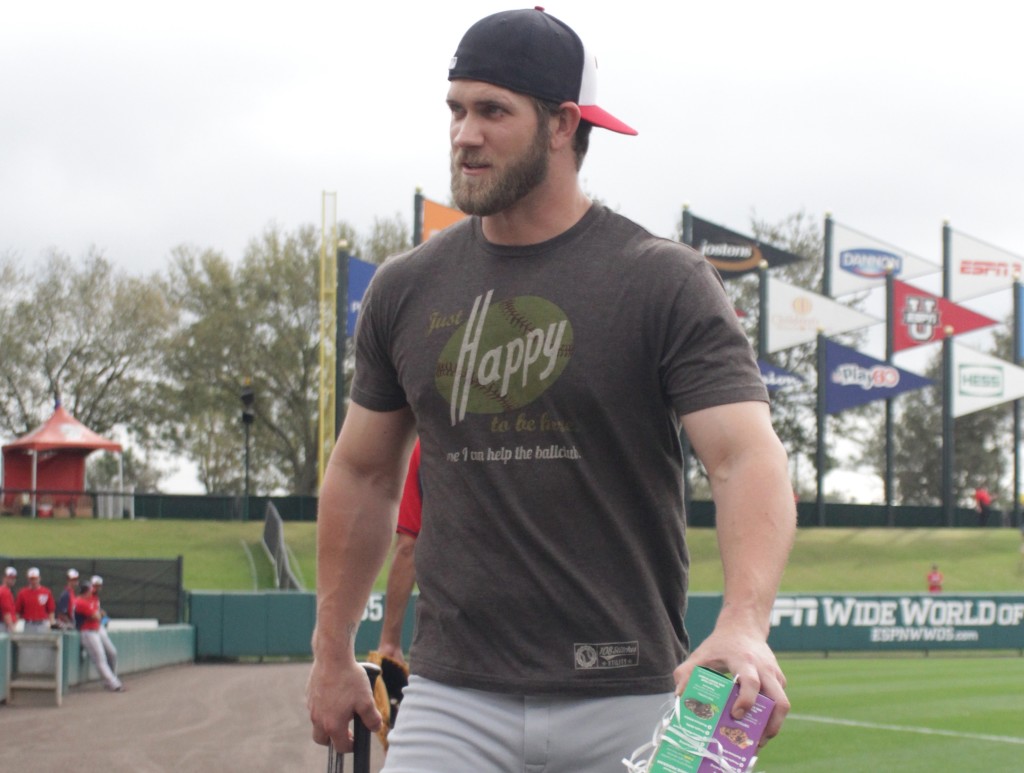
Why is muscle mass so important?
Muscle mass and increased bodyweight increases potential force output, which is one of the keys when trying to run faster and throw harder. Not only is added muscle mass important for injury prevention, but it terms of health and longevity there are few indicators better than muscle mass.
I held a webinar last year and release my “90 MPH Formula”. As you can see below, I’m a huge believer that strength gains and bodyweight are near necessity to throwing above 90. Mechanics and a whole host of factors play into this, but my athletes have shown me the information listed is accurate over and over again.
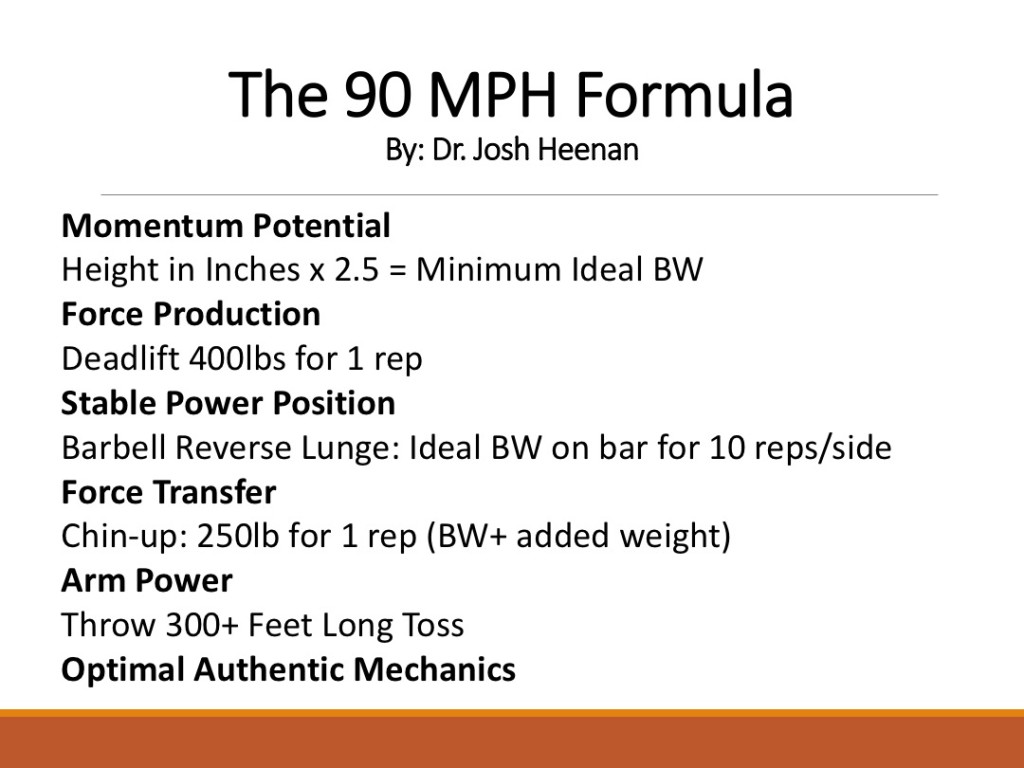
I encourage you to compare your favorite collegiate or MLB team roster to the “90 MPH Formula”.
The performance indicators and decreased risk of injury are great for athletes, but why else would this matter for collegiate coaches and MLB organizations?
Dedication/Toughness
For the most athletes, adding a significant amount of muscle mass requires intense dedication. Having seen 100+ athletes add 20 lbs in 10 weeks, I know this is not for the faint of heart. The ones who go on to add 30-40 lbs over a 6 month period have a level of need for the weight and self-discipline that is impressive to say the least. Dedication, toughness, and sacrifice for a larger goal (like significant muscle gain) is something all highly competitive teams want.
Projectable/Image
Baseball, like most sports, is highly speculative. As I tell our draft eligible guys, all it takes is one scout to fall in love with you and you will be picked up. Same holds true for college coaches. Being undersized by 30-50lbs while being scouted or recruited is going to portray a less than ideal image of what you can offer, even if you are an exceptional athlete. As one of my good friends often says “dress for the job you want, not the job you have” prior to your college visits or your draft eligibility it is important to present yourself physically prepared for that next level of play. Leverage your opportunity to have those coaches speculate you are the hardest worker they have ever met.
During the first day of the MLB draft coverage, the hosts continually commented about how a bunch of the athletes were “gym rats”. They classified these guys as “workers” and would be an asset to each ball club they were about to join. Many college and pro organizations see the value of athletes who train hard, are more durable, and reach their potentials. Take the time now to dedicate yourself to being consistent while training hard and smart year-round.
Move Fast, Throw Hard, Live Well – Development is a process, not a destination.
With the draft only a few days away, this list will bode well for many of my clients and readers hoping to one day be drafted.
88 percent of NFL draft picks played multiple sports
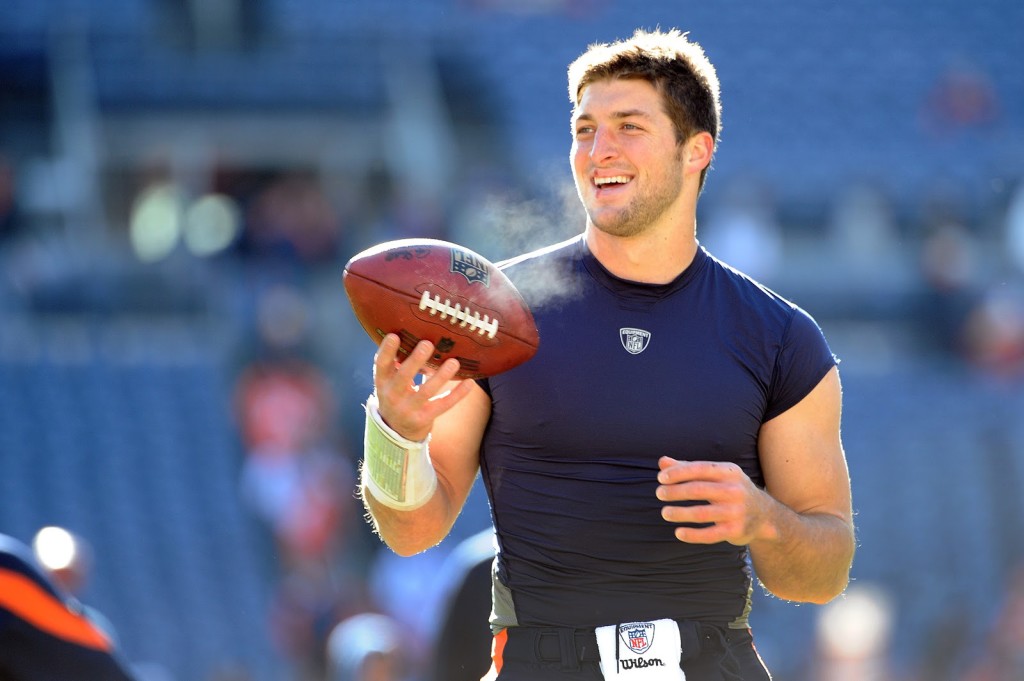
“According to TrackingFootball.com, 224 of the 256 players chosen during the draft were multi-sport athletes in high school. Of all draftees, 63% participated in track and field, 48% played basketball and 10% played baseball.”
Research has been pointing athletes towards playing multiple sports for maximum athleticism and decreased risk of overuse injury for years now. In my collegiate and clinical coaching experience, anecdotal evidence has been overwhelming that multi-sport athletes are healthier and reach high levels than their specialized counterparts.
Cubs manager Joe Maddon speaks out against specialization
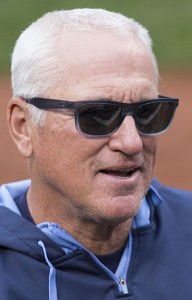
“I hate the specialization with kids, when they’re playing on these travel squads when they’re like 12, 13, 14 years old, only dedicated to one thing, Traveling all the time. Paying exorbitant amounts of money to play baseball with hopes they’re going to become a professional baseball player. “I think that’s crazy. I love cross-pollination when it comes to athletes, You get guys that did not just play baseball, meaning they’ve been around a different set of coaches and styles and ways to get in shape and thoughts. I love that.” Maddon said
Many parents I speak to are terrified that their child will not be prepared to play a high level of high school sport, will not get a scholarship, and will not get drafted. I understand the worry, but many are racing the wrong race. The goal should be to maximize enjoyment of the game, become as athletic as one can become, and keep on developing. Development is a process, not a destination.
3 Eating Secrets to Bulk Up Fast
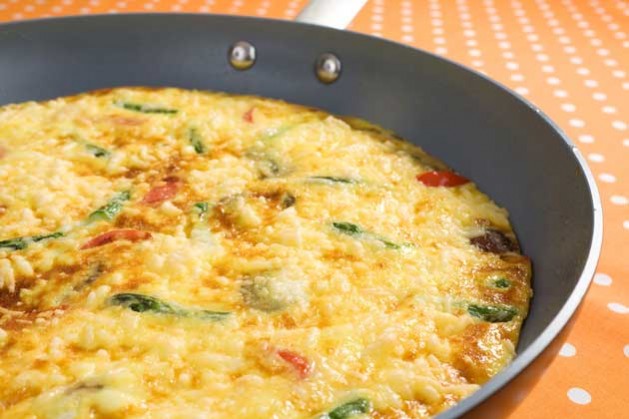
This week I have been bombarded with muscle gain and weight gain questions. With the summer approaching, many athletes are looking to pack on weight while playing and training hard. This can be tough, but is done every year in our gym— usually 20-30lbs in a 3-month window. These three tips help many of our ball players stay on track during these bulking phases.
Predicting and Preventing UCL Injuries
Pitching coaches and researchers are pointing to mechanical flaws along with increased pitching velocities as the root cause of the large uptick in UCL tears. In the gym, we see a bunch of trends that have been correlated to UCL injuries either anecdotally or backed by research. The following are my top 3 red flags prior to a UCL injury from a thrower.
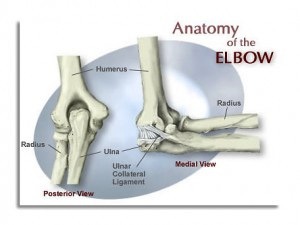
1. Cervical Rotation Dysfunction
Cervical rotation is depended on good joint mobility as well as enough flexibility from the muscles that attach to the neck and shoulder. What most people miss when evaluating or training rotational athletes is that core stability plays a huge role in cervical rotation.
The first video is of a left-handed pitcher supine with full right rotation in his neck.
The next video is of the same left-handed pitcher standing with limited right cervical rotation.
The inability to move properly through the neck while standing (especially in right cervical rotation) will lead to altered pitching mechanics. On the mound the result will often present as “flying open”. Pitchers with this type of dysfunction struggle with consistency of pitch location and velocity. They also tend to present with neck and shoulder pain prior to UCL damage.
One fix that we use with these athletes is half get-ups. Usually a few challenging with or without weight can correct this dysfunction long-term.
2. Tight Pitching Forearm
I have yet to find good literature on “forearm tightness” prior to UCL injury, but I can tell you from experience athletes who complain about forearm tightness on a regular basis that goes untreated often come back down the line with medial elbow pain, little leaguers elbow, or a UCL tear.
Studies have shown that the “flexor-pronator” muscles are used when throwing to create elbow stability.1 My suspicion is that where the body feels that it cannot control the violent valgus forces of the elbow during throwing, these forearm muscles (particularly the flexor carpi radialis) over-assist the passive restraints of the ulnar collateral ligament. This is a red flag that needs to be address immediately.
3. Lower Body Injury or “Balance Issues”
Fluid transfer of force from one joint to the next is the basis for great movement, injury prevention, and high performance. Ignoring foot, ankle, and knee injuries while jumping back into high level throwing is asking for trouble up the kinetic chain.
Garrison et. al compared baseball players who had no UCL tears vs. players who did. Each group completed the Y-Balance Test, a quantitate test to measure overall balance. Participants with a UCL tear demonstrated decreased performance for their stance and lead lower extremities during the Y-Balance Test. The researchers concluded that there is a potential link between impaired balance and UCL tears in high school and collegiate baseball players.
I put “balance” in quotations because I believe there is a wild miss understanding of what real balance issues are. True balance issues come from the vestibular system. Most of what we see with younger athletes is very poor strength and an inability to express strength or movement in a given range of motion. When someone says they have a balance issue when standing on one leg, I hand them 2 heavy dumbbells to hold next to their body and stand on one leg again. By holding the weight and crushing the dumbbells with their hands, they activate their hips and core musculature giving their body feedback to remain stable. If you try this little test and your single leg stance does not improve, you likely have some true underlying balance issues and should get that checked out. For the rest of you, you need to get stronger!
1. Park MC, Ahmad CS. Dynamic contributions of the flexor-pronator mass to elbow valgus stability. J Bone Jt Surg. 2004;86(10):2268-2274.
Want to play college baseball? This weekend, you must do this.
Watch College Baseball
The NCAA Regionals are played continuously from Friday to Sunday on ESPN U, ESPN 3, and the SEC Network. Can’t make it because you have games all weekend? DVR a few of the games and watch them Sunday night.
Take this yearly opportunity to learn about your potential competition. Analyze the physical attributes of each player, how they play the game, how fast they run, how hard they throw. So often I work with players who want to play college baseball, but have no idea what the talent pool is like at that level.
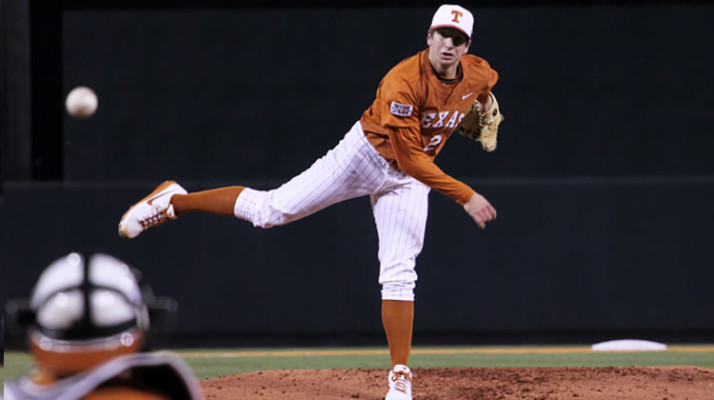
Check out the rosters of some of the known powerhouses. For instance, Texas has only 4 players listed under 180lbs. Of the 17 pitchers on their staff, Texas has only 1 that is under 180lbs, and he is a freshman. Weight is not the end all be all for baseball players, but it is absolutely one indicator of how well someone is built (assuming the athletes are lean). Adding muscle mass is one of the easiest ways to increase mph on the mound, decrease injury risk, and raise your overall athletic potential.
Why bodyweight is important for pitchers
The speed of the college game is often surprising for high school athletes, especially at the high echelon DI programs. In 2013, Perfect Game published this list of the fastest high school sophomores, juniors, and senior 60 yard dashes.
Averages: High School Senior 7.31 | Junior 7.44 | Sophomore 7.56
Top Performers – 60-Yard Dash – Class of 2014
| RK | Time | Name | Event | School | City | State |
| 1 | 6.28 | Carl Chester | National Showcase | Lake Brantley | Longwood | FL |
| 2 | 6.31 | Denz’l Chapman | National Showcase | Serra | Los Angeles | CA |
| 3 | 6.35 | Jared McKay | Southeast Top Prospect Showcase | Chamblee Charter | Stone Mountain | GA |
| 4 | 6.36 | Evan Holland | Mid Atlantic Top Prospect Showcase | Timber Creek | Erial | NJ |
| 5 | 6.37 | Jack Flaherty | National Showcase | Harvard-Westlake | Burbank | CA |
| 6 | 6.42 | Clay Lane | Sunshine South Showcase | Kaufman | Kaufman | TX |
| 7 | 6.43 | Michael Gettys | National Showcase | Gainesville | Gainesville | GA |
| 8 | 6.44 | Derek Hill | National Showcase | Elk Grove | Sacramento | CA |
| 9 | 6.45 | Connor Brady | South Top Prospect Showcase | Plano Sr. | Plano | TX |
| 10 | 6.46 | Matthew Collins | National Showcase | Memorial | Houston | TX |
| 10 | 6.46 | Trenton Kemp | National Showcase | Buchanan | Clovis | CA |
| 12 | 6.47 | Troy Stokes, Jr. | National Showcase | Calvert Hall College | Baltimore | MD |
| 12 | 6.47 | Stone Garrett | National Showcase | George Ranch | Sugar Land | TX |
| 14 | 6.48 | Tristan Rojas | Sunshine Northeast Showcase | James Monroe | Bronx | NY |
| 15 | 6.49 | Landon Morgan | South Top Prospect Showcase | Lubbock Christian | Levelland | TX |
| 15 | 6.49 | Giovanni Abreu | National Showcase | George Washington | New York | NY |
| 15 | 6.49 | Jeren Kendall | National Showcase | Holmen | Holmen | WI |
| 15 | 6.49 | Alexis Pantojas | Caribbean Top Prospect Showcase | Puerto Rico Baseball Academy | Vega Alta | PR |
Top Performers – 60-Yard Dash – Class of 2015
| RK | Time | Name | Event | School | City | State |
| 1 | 6.44 | Satchel McElroy | Jr National Showcase | Clear Creek | League City | TX |
| 2 | 6.45 | Demetrius McAtee | South Underclass Showcase | Parkway | Bossier City | LA |
| 3 | 6.46 | Alex Shaver | Jr National Showcase | George Ranch | Sugar Land | TX |
| 3 | 6.46 | Bakari Gayle | Jr National Showcase | Martin Luther King, Jr. | Stone Mountain | GA |
| 5 | 6.50 | Eric Cole | South Underclass Showcase | Southlake Carroll | Southlake | TX |
| 6 | 6.51 | Connor Smith | Ohio Valley Showcase | H.H. Dow | Midland | MI |
| 7 | 6.54 | Roman Millem | Ohio Valley Showcase | North Oldham | Prospect | KY |
| 7 | 6.54 | Jimmy Herron | Jr National Showcase | La Salle College | Harleysville | PA |
| 9 | 6.55 | Daniel Little | National Underclass Session 3 | Lexington Catholic | Nicholasville | KY |
| 10 | 6.57 | Demi Orimoloye | Jr National Showcase | St. Matthew | Orleans | ON |
| 10 | 6.57 | Bakari Gayle | Southeast Top Prospect Showcase | Martin Luther King, Jr. | Stone Mountain | GA |
| 12 | 6.59 | Tyler Williams | Jr National Showcase | Raymond S. Kellis | Peoria | AZ |
| 12 | 6.59 | Shane Selman | Sunshine South Showcase | Alfred M. Barbe | Lake Charles | LA |
Top Performers – 60-Yard Dash – Class of 2016
| RK | Time | Name | Event | School | City | State |
| 1 | 6.62 | Vincent Ramos | Caribbean Underclass Showcase | Colegio Bautista | Toa Baja, Levittown | PR |
| 2 | 6.64 | Nicholas Rowland | Mid Atlantic Underclass Showcase | Chestnut Hill Academy | Blue Bell | PA |
| 3 | 6.67 | Ryan Mejia | Sunshine East Showcase | Alonso | Tampa | FL |
| 4 | 6.72 | Matthew Meisner | Sunshine Northeast Showcase | Salem | Salem | NH |
| 5 | 6.78 | Christian Moya | California Underclass Showcase | Bishop Amat | Chino Hills | CA |
| 6 | 6.79 | Cameron Locklear | Atlantic Coast Underclass Showcase | Jack Britt | Fayetteville | NC |
| 7 | 6.82 | Tyrik Jones | Southeast Underclass Showcase | The Galloway | Stone Mountain | GA |
| 8 | 6.83 | Corbin Bice | Southeast Underclass Showcase | Chilton Co. | Clanton | AL |
| 9 | 6.83 | Aidan Elias | Ohio Valley Showcase | Sayre | Lexington | KY |
| 10 | 6.84 | Kace Massner | Midwest Underclass Showcase | Burlington Community | Burlington | IA |
| 11 | 6.85 | Isaac Collins | Midwest Underclass Showcase | Maple Grove | Maple Grove | MN |
| 11 | 6.85 | Austin Bodrato | Sunshine Northeast Showcase | St. Joseph Regional | Northvale | NJ |
| 11 | 6.85 | Ashton King | Atlantic Coast Underclass Showcase | Christiansburg | Christiansburg | VA |
Source: http://www.perfectgame.org/Articles/View.aspx?article=9177
As you can see, the average senior in high school ran a 7.3 60-yard dash, which is not overly impressive. That 7.3 average is largely made up of athletes who will never step foot on a college ball field. Of high school varsity baseball participants only 5.6% will play at the collegiate level.
Only 5.6% of high school baseball players ever make a college team. As a high school athlete, are you REALLY outworking the other 95%?
— Josh Heenan (@josh_heenan) May 25, 2015
What is impressive is the fastest sophomore ball players run between a 6.44 and 6.85. That is blazing fast for an underclassman. To even come close to breaking the top 15 for the senior class you must run under a 6.5, which is plus speed for an MLBer.
So how do you stack up?
Not sure how hard you throw? Get on the gun at your next outing.
Not sure how fast you run? Go to a track and video tape your 60 yard dash. Video does not lie, handheld timers do.
Be analytical with the games you are watching this weekend and see how you would compare against the competition and what aspects of your game need the most work.
Have questions or comments about playing at the next level? Leave a comment below.






